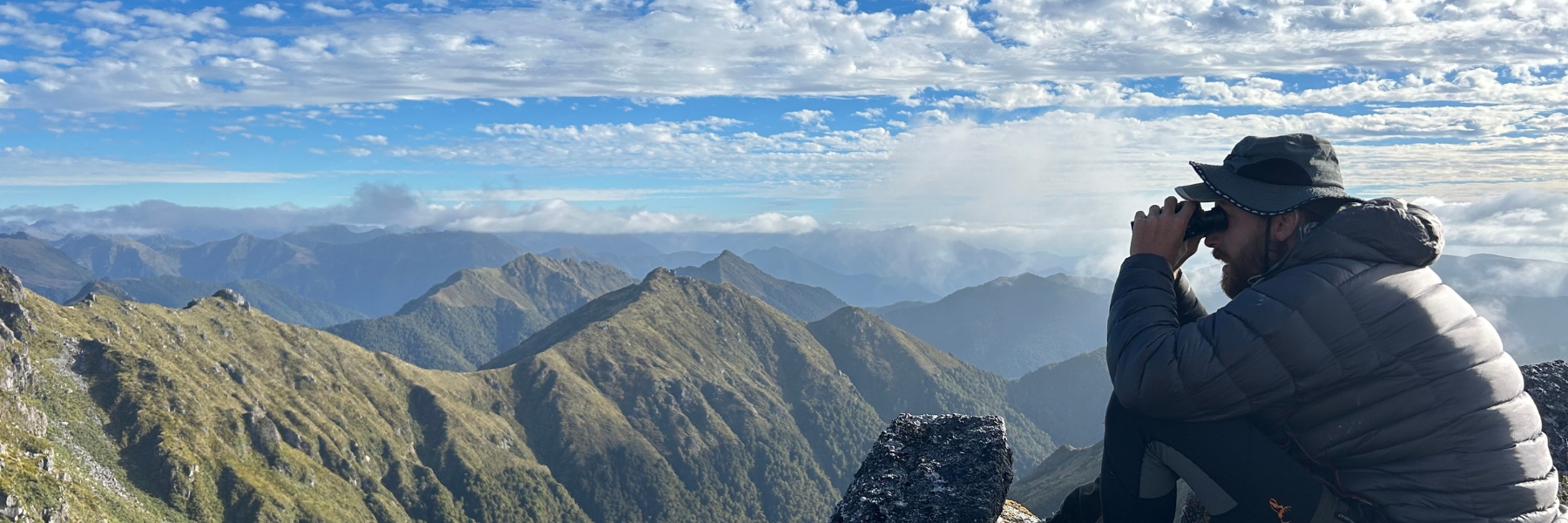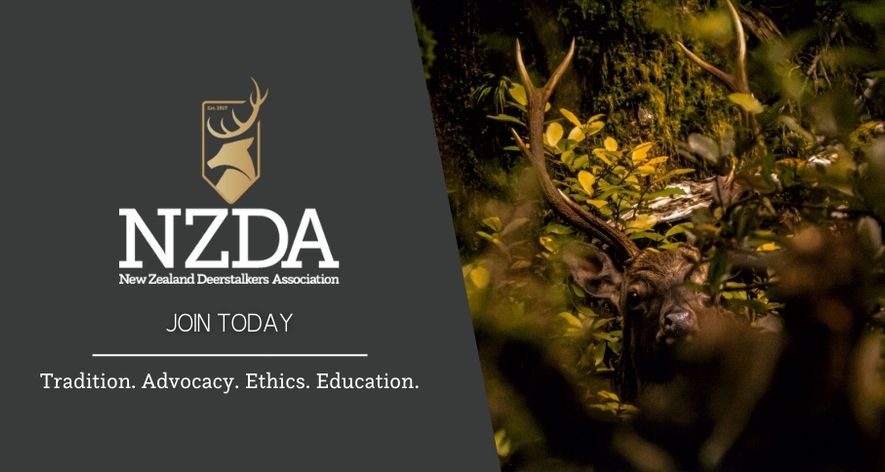As luck would have it, good mate Lucas and I were due to have our (first) baby boys plonk in the middle of the roar this year.
Hunting and Wildlife Magazine - Issue 226 - Spring 2024
Words By: Tom McCowan
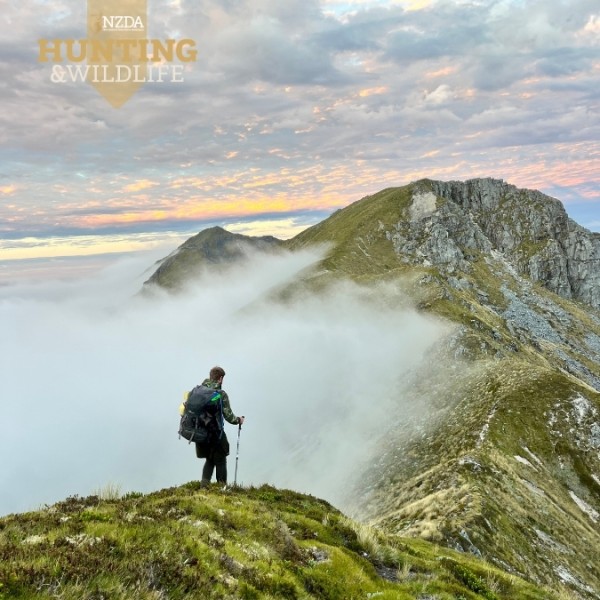
As luck would have it, good mate Lucas and I were due to have our (first) baby boys plonk in the middle of the roar this year. Knowing that the customary weeks chasing stags in April and then bull tahr in May would be off the cards, we made plans to get ahead of the curve for a February chamois and stag trip. This would be somewhat of a last hurrah before our lives were about to change significantly – our “Babymoon”.
We had our sights set on the Nelson/Marlborough region as somewhere a bit different, and neither of us had spent much time there. After a few map sessions and prying for local intel, we rolled the dice on our spot that looked like it should tick all the boxes for us. As is usual, the forecast the week before had us second guessing our trip and making plans B, C and D (which were targeting Kingys up north). Still, a few days out, things seemed to settle, and next thing we were anticipation-filled, queueing up for the Interislander.
Driving down to the hangar on the planned departure day, low clouds in the valley had us wondering how long we would be waiting to fly. Thankfully, it was clear up high, and the pilot even bumped us to the front of the queue of others waiting for the clouds to clear in other locations.
One thing that always strikes me on these trips is the juxtaposition between the nervous scramble to get the last bits of gear ready, triple-checking you’ve at least got your ammo, bolt and rifle, the smell of AV gas, and the loud shudder of the chopper blades blowing your hair back - to minutes later being swallowed by the eerie silence and isolation of the alpine tops, home for the next five days.
Our base camp was at the top of a large basin in the middle of several kilometres of alpine top country that saddled out into other parts of the range. It was a prime position next to a few tarns, a good vantage point central to the areas we wanted to explore, and one ridge away from the main area the pilot had suggested most of the animals would be.
After setting up base camp for the week, the priority turned to glassing the basin below us. I never hang much hope on turning up animals close to camp immediately after flying in, thinking that the disturbance from the chopper and time of day will usually have animals out of sight bedded for a good while. However, within a minute of glassing, I had my first spike in adrenaline as I picked up the unmistakable blond glow of a lone chamois in the scrubby faces below us, less than 500m from camp. While neither of us could claim to be chamois experts, it showed all the signs of a respectable head through the spotter, with length at least 50% over its ears and strong hooks. The decision to chase him was made easy with Steven Rinella’s words in my head: “Do not turn down on the first day what you would be happy to take on the last”.
The stalk within range was made easy with the folding bluffs, allowing us to stay out of sight and the major advantage of coming down from above. We found a shooting platform within 200m of where we last saw him. After covering the ground, the relief and perspective of everything had changed just enough to wonder if we were in the right spot to see him again. After about an hour of waiting and doubt starting to set in, he reappeared. At closer range, it was clear he was in the calibre of animal we were looking for. He offered just enough shoulder through the scrub to give me a confident shot with the .25-06. The shot was a clear hit, but not the ‘down like sack of spuds’ you always hope for. He ran to the edge of the next bluff system, clearly hurt and on his last legs. I took another shot to finish him, which sent him in a cartwheel off the bluff and out of sight as Lucas exclaimed, “NOOOO!”, behind me. Without a clear line of sight to where he fell, apprehension kicked in again during the recovery, soon followed by relief as he was nicely laid up in an open shoot under the bluff.
The all-important tape test brought him in at 9 ¾ inches, with beautiful hooks and nice bases. Being more used to hunting red deer and bull tahr, it is always surprising to see how compact chamois can be, especially in their summer coats. My goal for the trip was to beat my personal best (PB) and clear nine inches, so I was well and truly stoked, not to mention doing so on the first afternoon to take the pressure off a clear week ahead. We spent the rest of the afternoon getting eyes into neighbouring basins, spotting a couple more animals to pique our interest for the next few days.
We woke to a bit of clag the next morning, which gave us a chance for bacon and eggs and to sort gear before setting out to fly camp along the northern part of the range. It was so nice to be camped up high and just off the long leading ridges, allowing great access to all the major basins. We spent the morning slowly opening up new country to the north, picking up a few more animals, but nothing to get excited about. We were not mentally prepared for how hot it is hunting on crystal clear days in the February sun. This saw us scrambling for any shade or breeze possible through the middle hours of the day and having to be quite strategic about water management heading into new areas where it wasn’t guaranteed. That afternoon, we picked up a few more chamois does with kids, a potential lone buck, and the first two deer for the trip - a hind and a yearling on the bush edge of another head basin.
We set up a camp in a small head basin that afternoon, giving us an easy view of the northern aspects of the area. That evening, we decided to divide and conquer with the binos and cover two separate basins, eventually about 500m apart. It wasn’t long before I spotted something that may interest Lucas – a lone buck in another head basin that we hadn’t seen. We had just enough of a flicker of cell phone reception to be able to communicate the situation – that Lucas needed to get here quickly with the spotter.
When Lucas arrived, it took a while for our mate to reappear. With the spotter, we could assess that he was in a similar category to the one we had shot the day before, so it was a shooter for us. We were perfectly positioned to make an out-of-sight line of approach down across the nicely contoured tussock slopes to get to a shooting spot within about 250m. Once we were within range, the buck was nowhere in sight, so the nervous waiting game started again. However, with a long evening of light on our hands and knowing we had made a good approach, he had to come out soon. Lucas kissed his .308 round, slid it into the chamber, and we waited.
After carefully anticipating all the possible places he could step out, he appeared in the middle of a low clearing out of nowhere. Lucas waited a few moments for the broadside shot and took the opportunity. I think it can get overlooked how much the success of a trip can hinge on the one split second when the trigger gets pulled. All the hours at the range, money spent on gear, weeks scouring maps and organising logistics, and the time off work all come to a focal point at that moment. All this weight was released for Lucas as the buck was hit hard, stumbled and fell to rest just out of sight.
It was a postcard moment retrieving the buck. There was no breath of wind, and the sun was leaving its final glow in the hills around us, looking like paintings. The buck was a beautiful, healthy-looking animal, going a respectable 9 ½ inches and a PB for Lucas. We took our time to enjoy the moment and quietly made our way back to camp, with the amazing security of the feeling that the objective for the trip was being achieved for both of us only two days in!
We could now relax and enjoy exploring the country for the next three days without real reason to pull the trigger again unless we found a monster buck or a nice stag. We spent the following morning pushing just past the basin where Lucas had shot his buck the evening before. A few more distant chamois were spotted and stags started to appear all at once, like clockwork. First, a young six-pointer still in velvet, patrolling and feeding in the basin below camp, followed soon after by a much larger mature stag with a very lengthy eight points. He had the potential to be a cool representative head for the area but was at least a day’s work away on the neighbouring section of the range.
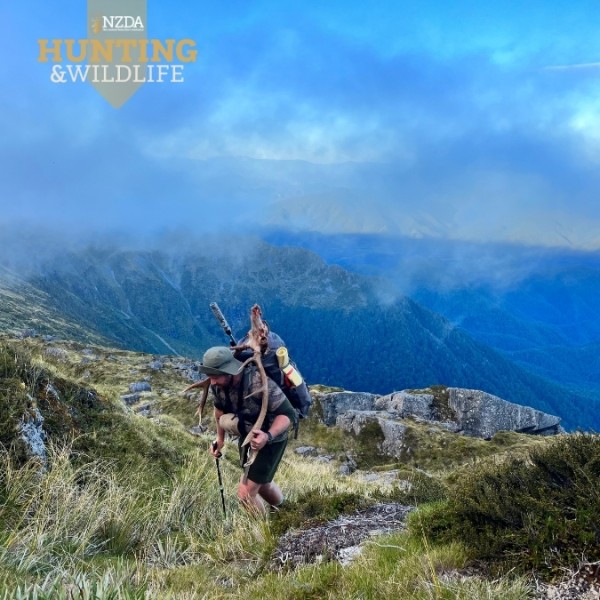
Lucas was sitting on the other side of the ridge when the peaceful silence of glassing was interrupted by his whispered urgency: “Quick, grab your rifle!”. Instantly obliging, I popped over to his side of the ridge where a big-bodied stag was visible with the naked eye a few hundred metres away up a scrubby gut. Through the binos, we could see he was a mature 10-point stag with reasonable length, probably a good representative of the area. While the initial excitement was perhaps a little premature, mainly due to him being out of range for both of us, we decided he was worth a closer look, as there was an easy stalk to get within very close range of him. We were able to sidle around a face and tuck behind a small knob that the stag had fed its way up and disappeared behind. We covered the ground to well within 100m of him and Lucas suggested he may have already fed through to being right underneath our feet. He was right. The next corner we came around, he was standing in clear sight, fully aware of our presence, about 80m away. Being in front and carrying my rifle, I decided to take the shot feeling confident and freestanding at close range. The shot hit low in the shoulder; he ran a short distance and stopped on the edge of a small, terraced ridge that he could have continued over, so another shot was taken in the neck, which crumpled him into the small gully below us.
He was huge-bodied and in great condition, a character ten-pointer with a reasonable length of over 30 inches and only a thread of velvet left to strip. Unfortunately, with three days left in the stinking hot summer conditions, we could not look after much meat, but we took the beautiful fat back steaks for camp dinners. We were starting to enter the hottest part of the day, so we took the chance to hang out and have a wash in an alpine spring near where the stag was shot before making the hot trudge back up towards camp.
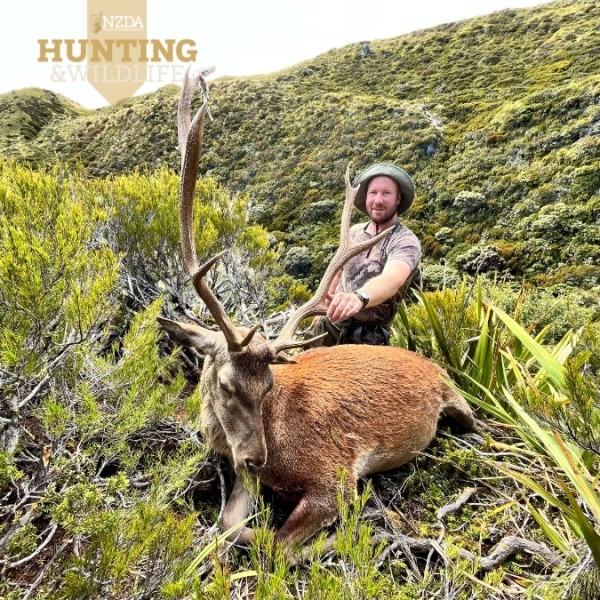
After the heat had dropped out of the afternoon, we spent the rest of the day returning to base camp, glassing as we went with nothing else much of note spotted. It will be hard to beat the satisfaction of a tarn-chilled beer, a fat stag back steak, and a toasty fire at base camp, knowing the goals for the trip had been well and truly accomplished, with two more full days with clear weather to explore the untouched country.
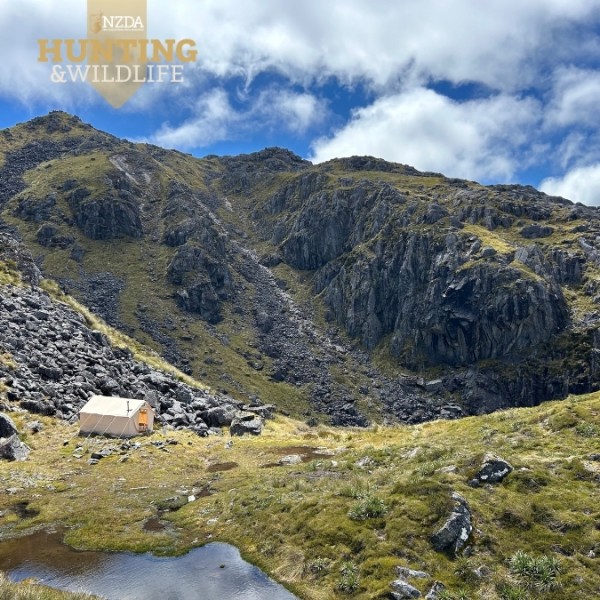
The plan was to spend one more night away from base camp to explore the southern part of the range. Clag that morning afforded us another slow start, but we were breaking into new prime country as it cleared. We opened up a new major basin that looked like prime chamois country. It didn’t take too long to turn up a couple more deer and another lone buck who looked like he needed more attention. He was a long way off, so we spent the rest of the morning carefully scouring the rest of the basin. We saw another lone chamois moving off and out of the main basin a bit later. We would later decide that this was the first buck moving out of the area, as we never spotted him again for the rest of the trip, potentially due to our scent slowly filling the large basin.
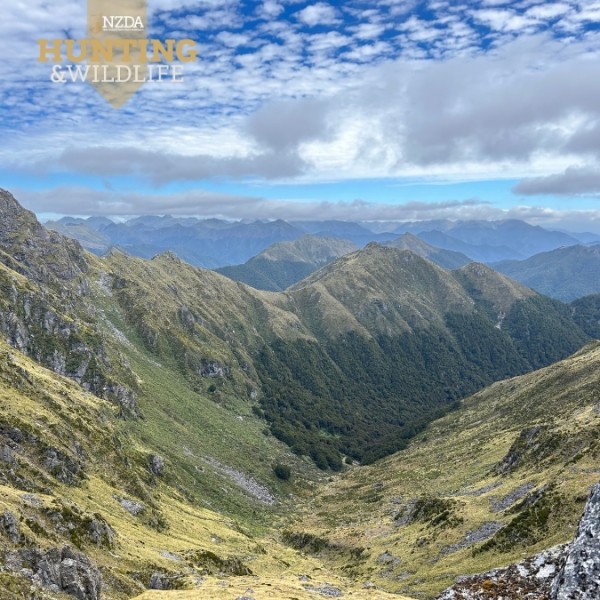
We left our camp gear behind on the only flat ledge at the top of the basin and continued along the main ridge to open up the remainder of the country to the south. We bumped and spotted a few more does along the main ridge before we parked up to open up another large tussock basin. Something about this area just screamed out deer. It wasn’t long before a lone hind was picked up low in the scrub, and soon after, Lucas picked up another stag feeding right out in the open tussock just below us. This was another highlight of the trip and something we had not witnessed to this extent before – the behaviour of the stags in February as they carelessly fed right out in the open, hundreds of metres from the bush edge and throughout the whole day.
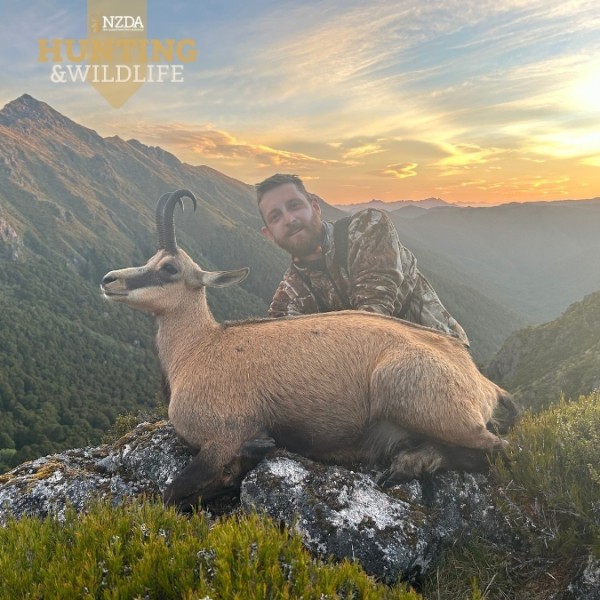
This stag was about four years old, a nice-looking eight-pointer with reasonable length, but he would probably never amount to much more. While we ummed and ahhed about the opportunity to take some fat venison home, Lucas decided to leave him be, and we enjoyed watching him weaving his way through the top of the basin feeding over the last days we were there.
We did spot one more lone chamois buck, which we decided must have been the same one we had spotted in the basin below the day before, as it seemed to be the only chamois in the area. One thing you learn when you have the luxury of spending multiple days glassing in big open country is that you generally pick up all the animals that are present. This is confirmed as you re-spot the same animals the next day without any new arrivals. While this does away with the hope that something special might appear, it does give you confidence that you are seeing everything. On the final day, we gave a last push towards the southernmost basin within the area to turn up a couple more deer, including another young stag feeding well out in the open through the day.
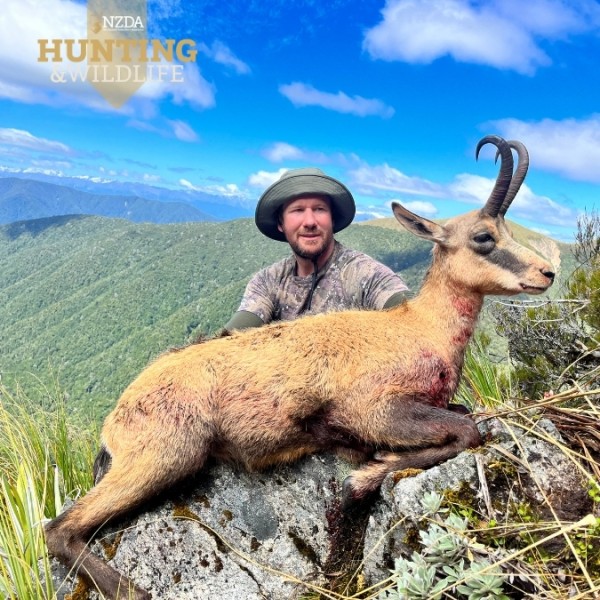
I remember making a special effort to take in and appreciate everything on the final walk back to base camp, more so than I usually do, knowing trips like this would be less frequent for a while. Writing this now, I can see that it is part of the adjustment of making trips like this in early parenthood. While being less frequent you certainly appreciate everything more. All this was made more special by being one of those rare trips where everything seems to come together with awesome weather in amazing new country, with decent animals providing the trophies we were after. The perfect Babymoon.
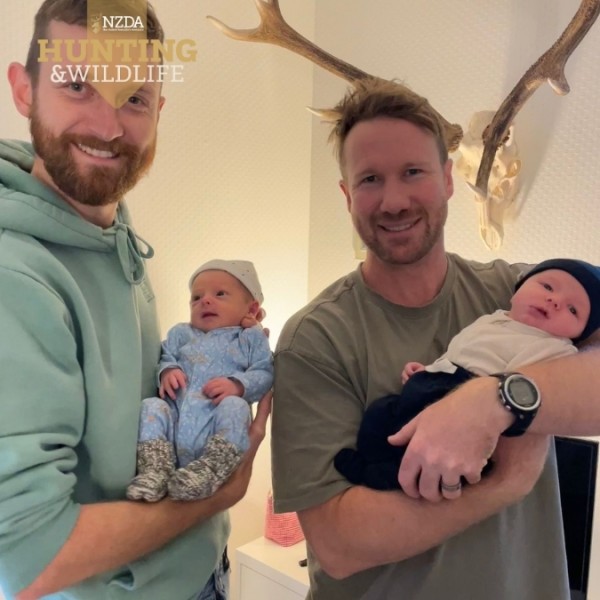
Read Previous Editions Online
Read the historic editions online for free now. Browse here.

